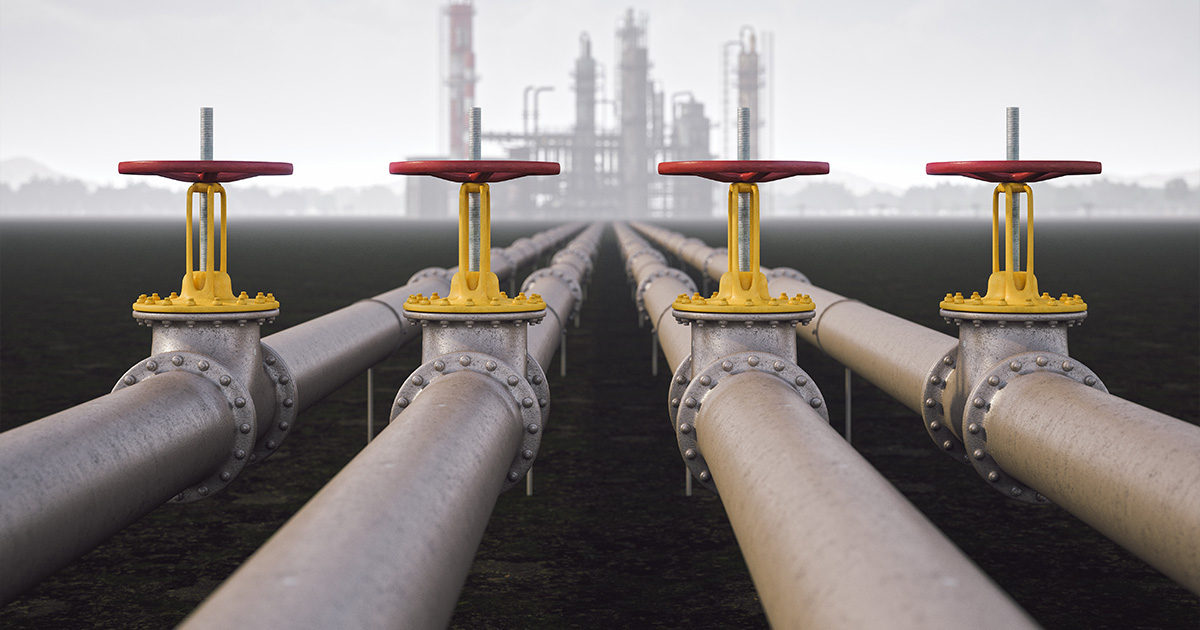
While U.S. natural gas futures prices have fallen sharply in recent months, higher prices and increased volatility could be on the long-term horizon as the energy transition accelerates and European markets respond to recent supply constraints.
Rising U.S. exports of liquefied natural gas (LNG), fewer opportunities for fuel-switching between coal and gas and supply chain bottlenecks could all contribute to higher domestic energy costs in the years to come.
According to a new report from CoBank’s Knowledge Exchange, growth in U.S. LNG export capacity will lead to an increasing interconnection between previously disconnected markets, creating a situation where events in one market will strongly influence outcomes in others.
“Over the past century, the U.S. has operated as a natural gas island with domestic supply sufficient to meet the nation’s requirements,” said Teri Viswanath, lead power, energy and water economist for CoBank. “From a pricing perspective, domestic consumers benefitted from their proximity to natural gas reserves and experienced only brief periods of sustained high prices.”
“However, that islanding effect began to change with the outsized growth of U.S. natural gas production in 2006, with the expanded application of fracking in shale formations,” Viswanath said.
The shale production boom ultimately led to the commissioning of LNG export facilities to absorb the excess supply. Today, the U.S. produces almost double the amount of natural gas it did in 2006 and total exports account for one-fifth of that production.
In the next five years, upwards of 90% of gas demand growth could come from LNG exports, with as much as one-third of U.S. production possibly reserved for international trade. When Russia cut off natural gas to most of Europe last year, it created a supply vacuum that enabled U.S. LNG terminals to form the market equivalent of a land bridge to Europe. That laid the groundwork for greater competition between foreign and domestic markets.
Signs of the interconnection between the U.S. and European markets appeared last year as U.S. natural gas spot prices for delivery near Boston peaked in December around $35.00/MMBtu, as Northeast buyers outbid their Asian and European counterparts to sustain a continued flow of LNG imports. While true competition last year was fleeting, Viswanath expects to see greater ties later this decade as the next buildout introduces greater spare capacity to the system.
Over the past three decades, competition between natural gas and coal enabled fuel switching in response to price surges of either resource. However, that competition is fading quickly as coal production declines and the market impact of electric power fuel-switching has diminished. Structural changes are now driving more pronounced price movements for natural gas.
It is unclear if U.S. natural gas production can ramp up fast enough to meet the simultaneous acceleration of export growth and domestic electric generation. Until recently, fracking has simply not proved a great investment. Many shale operators consistently outspent cash flows, burning through hundreds of billions of dollars to fund the past two decades of growth. Production rose, but lack of returns sparked an investor exodus that has yet to meaningfully reverse.
“The global supply and demand imbalance that caused last year’s natural gas price run up will be revisited several times this decade and play an outsized role in setting domestic prices. Wholesale consumers should revive natural gas hedging programs and incorporate adequate physical supply contracts as a buffer against rising prices,” Viswanath said.